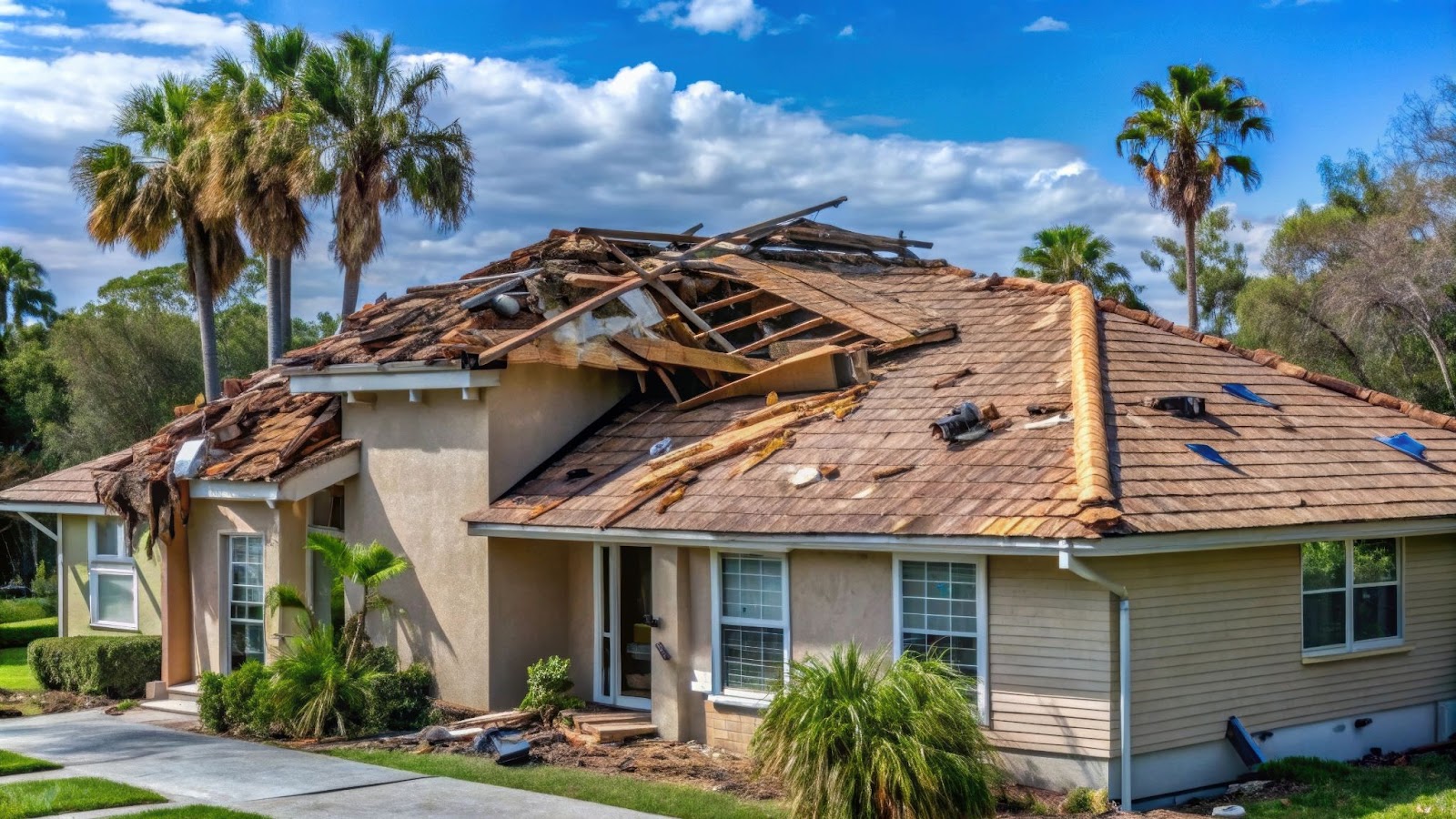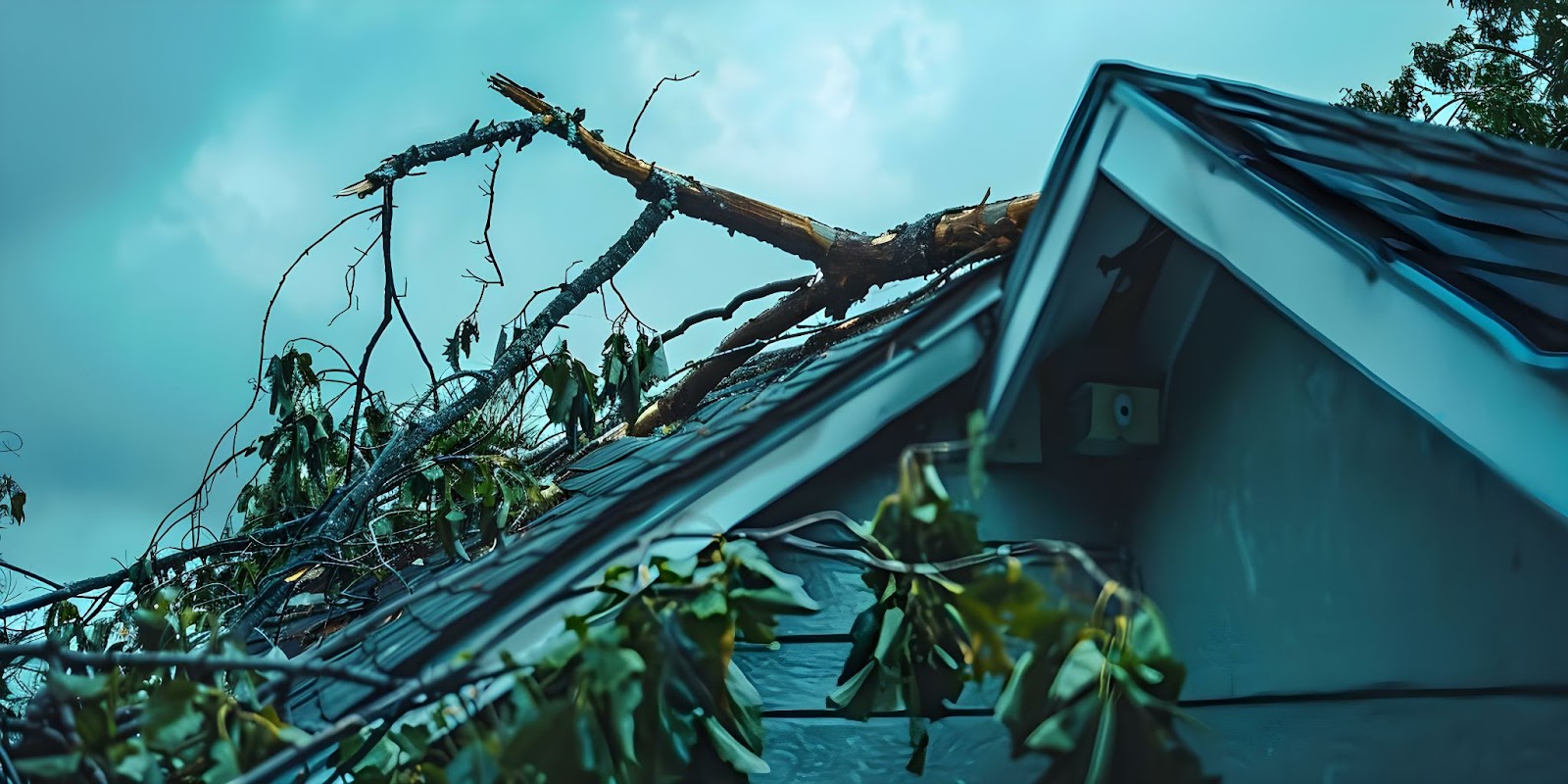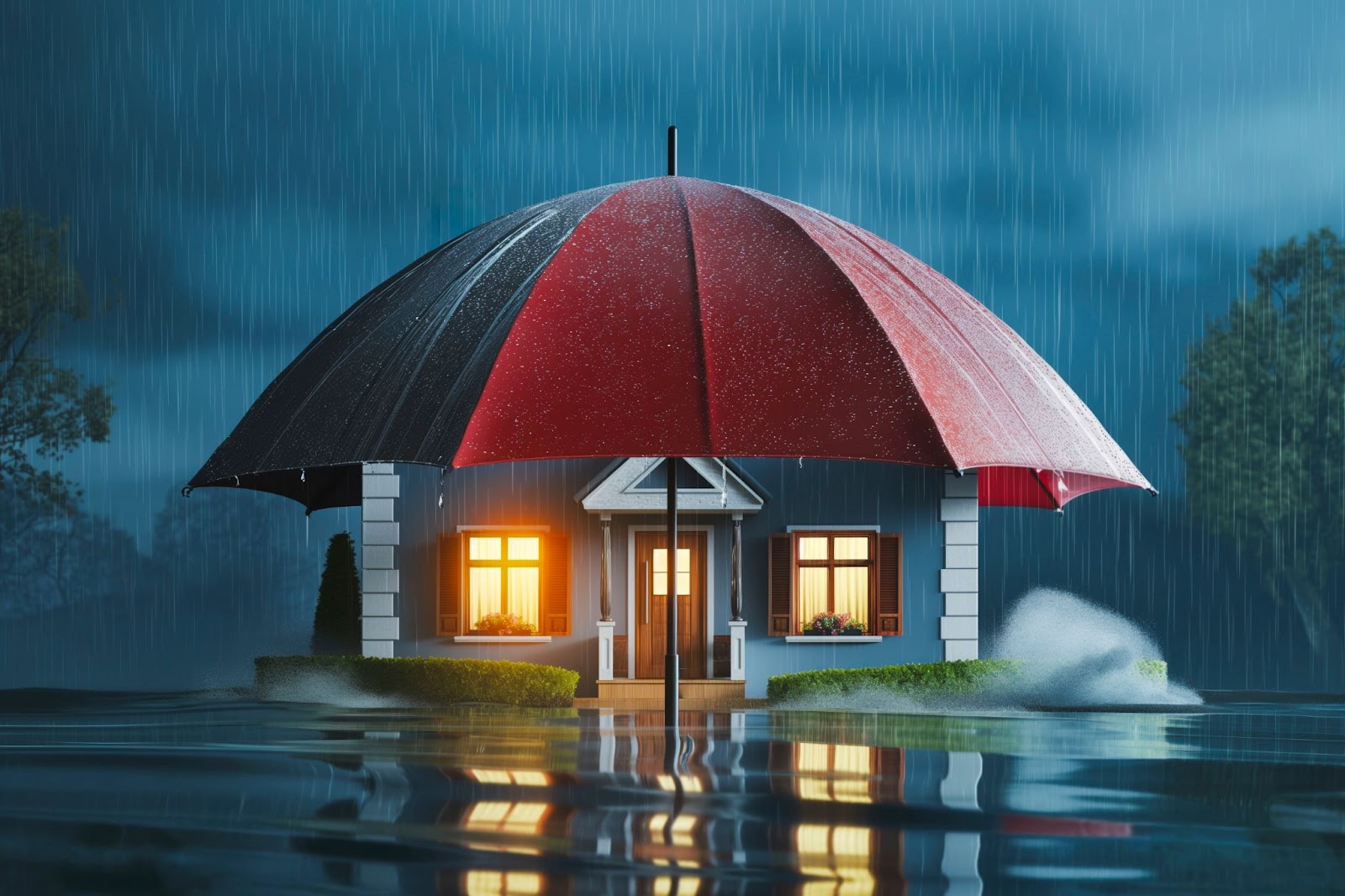Storm damage can hit hard, leaving homes battered, roofs torn up, and even entire structures weakened. When this happens, filing an insurance claim might feel like another blow.
Knowing how to navigate the claims process, document damage accurately, and stay organized can mean the difference between a successful payout and a financial headache.
Let’s break down each step you need to take to handle a storm damage insurance claim with confidence.
Act fast: Check for immediate hazards
The first step after any storm is to check for immediate safety hazards. Look for downed power lines, exposed wires, flooding, broken glass, or structural damage. If you see anything that poses a risk, avoid those areas and call emergency services if needed.
Before calling in storm damage repair services, ensure your home is safe for you and any professionals who may inspect the damage.
Once you’ve cleared the space of immediate dangers, take quick steps to prevent further damage. For example, if your roof is leaking, cover it with a tarp.
You don’t need to start full repairs, but insurers expect homeowners to prevent additional issues.
Document everything before starting any repairs
Before bringing in storm damage repair services, complete the following tasks:
- Document every bit of damage thoroughly.
- Take photos and videos from different angles.
- Capture wide shots and close-ups to show the scope and details.
- Make sure you document all damaged areas, from the roof to the foundation, and remember to include items like outdoor furniture or fences.
Don’t leave anything out, as insurers often assess claims based on visual evidence. Missing documentation might lead to delays, reduced payouts, or even denials. Keeping a digital and physical copy of your documentation helps you stay organized and secure.
Review your insurance policy
Understanding your policy is crucial before filing a storm damage insurance claim. Pull out your policy documents and read through the sections related to storm damage, water damage, and storm damage roof repairs. Check for specifics about what your policy covers, any exclusions, and your deductible.
Most insurance policies cover damage from storms but may have exclusions for specific storm types or types of property damage. For example, some policies cover wind damage but exclude water or flood damage, which requires separate flood insurance.
Knowing these details early on will help you set realistic expectations and prepare for out-of-pocket costs.
Contact your insurance company promptly
Once you’ve assessed the situation, contact your insurance company to file your storm damage insurance claim as soon as possible. The sooner you report the damage, the sooner they can send an adjuster to assess your home. Be ready to provide information about the damage, the date of the storm, and any immediate measures you took to prevent further issues.
When you speak with your insurer, ask for a timeline for each part of the process, from inspection to settlement. Request a claim number and get the name and contact information of any agents or adjusters you speak with. This will make it easier to track your storm damage insurance claim if you have follow-up questions or experience delays.
Get an inspection from a reputable contractor
While waiting for your insurance adjuster, arrange for an inspection from a reputable contractor experienced in storm damage repair services. This gives you an idea of the extent of the repairs and an estimate of the total costs involved. A professional inspection ensures you don’t overlook any hidden damage that could become more costly.
A trusted contractor can identify issues that might be missed at first glance, such as water damage within walls or weakened structural areas. You’ll want a contractor who understands storm damage roof repairs, water damage restoration, and structural repairs.
This inspection also allows you to compare your contractor’s report with the insurance adjuster’s report, which will help you be better prepared to address any discrepancies.
Meet with your insurance adjuster
Once your insurance company sends an adjuster to assess the damage, make sure you’re present during the inspection. Show the adjuster each area affected by the storm, and explain any measures you took to prevent additional damage.
Share your documentation and contractor’s inspection report. This way, they understand the full scope of what needs repair.
Stay proactive and ask the adjuster questions if needed, especially if there’s any uncertainty about coverage. Make sure you understand their findings and ask for an estimated timeline for claim processing. Remember, your contractor’s inspection gives you leverage if you need to dispute the adjuster’s estimate or if something gets overlooked.
Keep all receipts and records
Throughout the storm damage repair process, keep every receipt, invoice, and document related to the repairs. This includes receipts for temporary measures, like tarps, and invoices from storm damage repair services.
These records can play a crucial role in your storm damage insurance claim, especially if you need to negotiate for a higher payout or reimbursement. If you end up paying for part of the repairs upfront, receipts will help prove these expenses. It’s smart to keep a separate folder or digital file for all these records, making it easier to track costs and claim amounts.
Review your settlement offer carefully
Once the insurance company processes your storm damage claim, they’ll offer a settlement offer. Review this offer carefully, comparing it with your contractor’s estimate and the scope of the repairs needed. If the settlement falls short, you have the right to negotiate.
Contact your insurer to explain why you believe the offer doesn’t cover the full repair costs, and back up your case with documentation. Your contractor’s inspection report, photos, and receipts will support your argument. Remember, insurers are often willing to review claims if you provide solid evidence, so stay persistent if necessary.
Hire a contractor for final repairs
After you receive a settlement that covers the repairs:
- Hire a qualified contractor to complete the work.
- Choose a company experienced in storm damage repair services and storm damage roof repairs.
- Get a detailed contract outlining the repairs, materials, timeline, and costs.
The more precise and detailed the agreement, the less room for miscommunication or unexpected fees.
Verify that the contractor follows local regulations and obtains any necessary permits. Quality repairs protect your home’s value and prevent future issues, so avoid cutting corners here. A reputable contractor will help restore your home’s stability and appearance, giving you peace of mind as you move forward.
Follow up on any outstanding issues
Even after repairs, your storm damage insurance claim might have loose ends to tie up. Check with your insurer to ensure all payments have been issued and confirm the claim is officially closed. If you discover further damage later, having an open line with your insurance company will make it easier to reopen the claim if needed.
Keep your documentation organized, as it may help if you file any future claims. A record of past claims and repairs gives you a better understanding of what’s covered and helps with faster processing down the road.

Take control of your storm damage insurance claim
Filing a storm damage insurance claim doesn’t have to feel overwhelming. You gain control over the process by staying organized, acting quickly, and documenting everything. From initial damage assessments to final repairs, every step you take strengthens your claim and helps you get the most from your coverage.
And with the right storm damage repair services by your side, you’ll rebuild stronger than before.
Reach out to Total Flood & Fire Restoration now!
Act before the damage worsens. Our skilled team is here to restore your home or business with responsive, expert service. We understand the urgency and stress that flood damage brings, and we handle every step of the restoration process with thorough care and attention to detail.
If you need immediate support or a consultation, contact Total Flood and Fire Restoration today. We’re ready to put our expertise to work so you can look forward confidently. Trust Total Flood and Fire Restoration for reliable, compassionate flood damage recovery.








